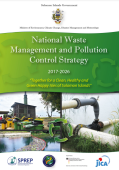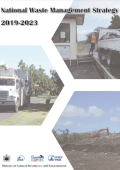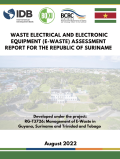
This factsheet illustrates how the Argentinian construction industry is actively lowering GHG emissions by incorporating a material efficiency strategy within its regulatory framework.

The strategy takes stock of the country's institutional and legal framework for waste management, and analyses trends on existing waste streams, including solid waste, hazardous and chemical waste, and e-waste.

The strategy outlines priority areas based on an analysis of Samoa's solid and chemical and hazardous waste management system.

This report builds a compelling profile of the local conservation economy in Canada's Nunavut hamlet of Taloyoak, and presents ways to drive socio-economic development in the community.
This case study addresses gender dimensions of hazardous chemicals and waste policies in Kyrgyzstan under the Minamata, Basel, Rotterdam and Stockholm conventions.
This report identifies good practices, policies and initiatives addressing the gender dimension in the context of chemicals management in Bolivia.

This case study was conducted to establish an inventory of different persistent organic pollutants (POPs) present in the transport sector in Nigeria, and dynamic substance flow analysis of major POPs following the provisions of the Polybrominated Diphenyl Ethers (PBDE) inventory guidance.

This case study helps to understand the sectoral approach of inventories for persistent organic pollutants and the benefits of dynamic material and substance flow analysis in assessing POPs in the building and construction sector.

This study focuses on e-waste generation and management in Suriname. lt also evaluates the feasibility of setting up a sub-regional dismantling e-waste facility in the South American nation.

This study investigates the current and potential barriers to increasing the supply and demand of green finance, and its accessibility to the industrial sector in Jordan.
